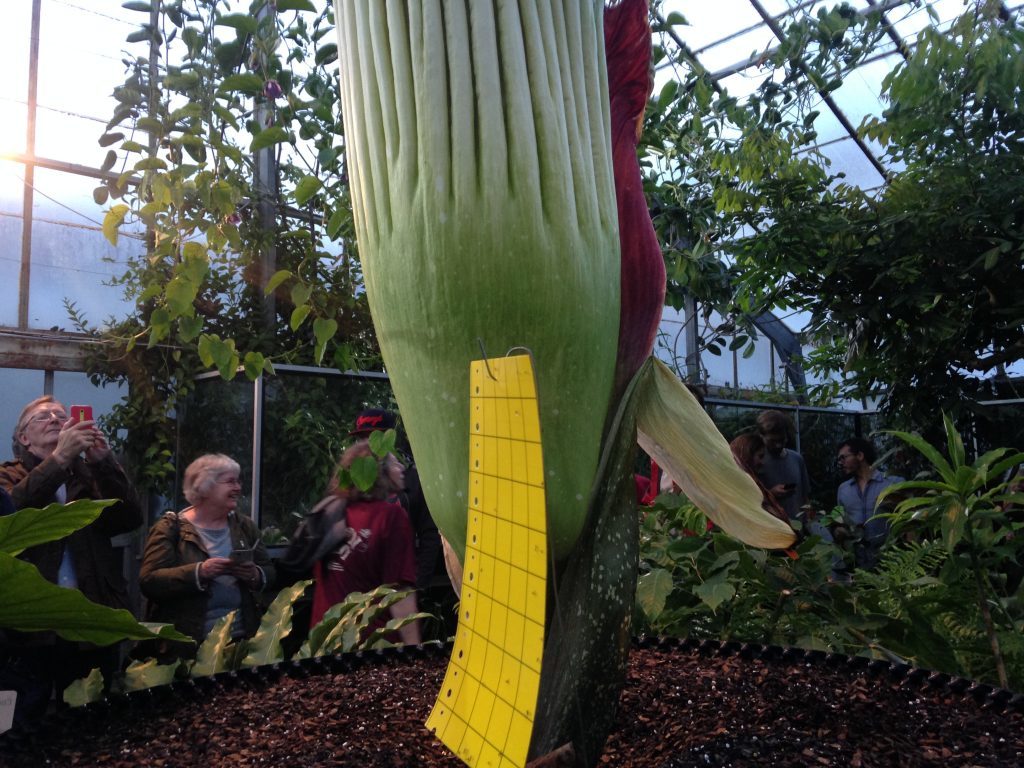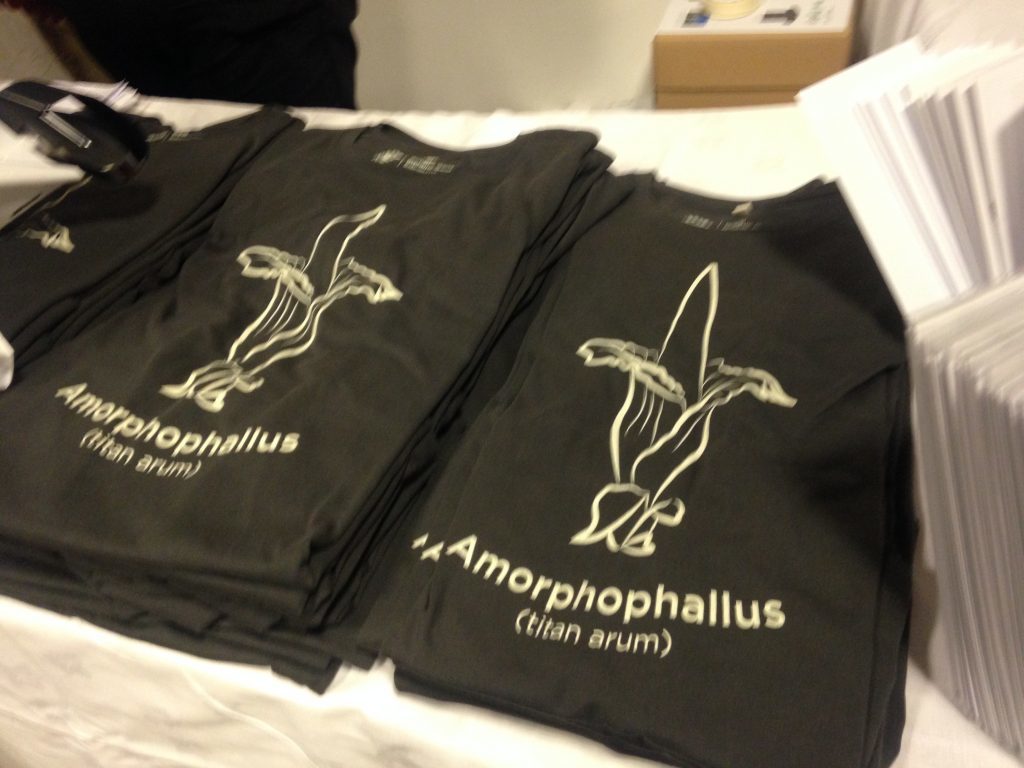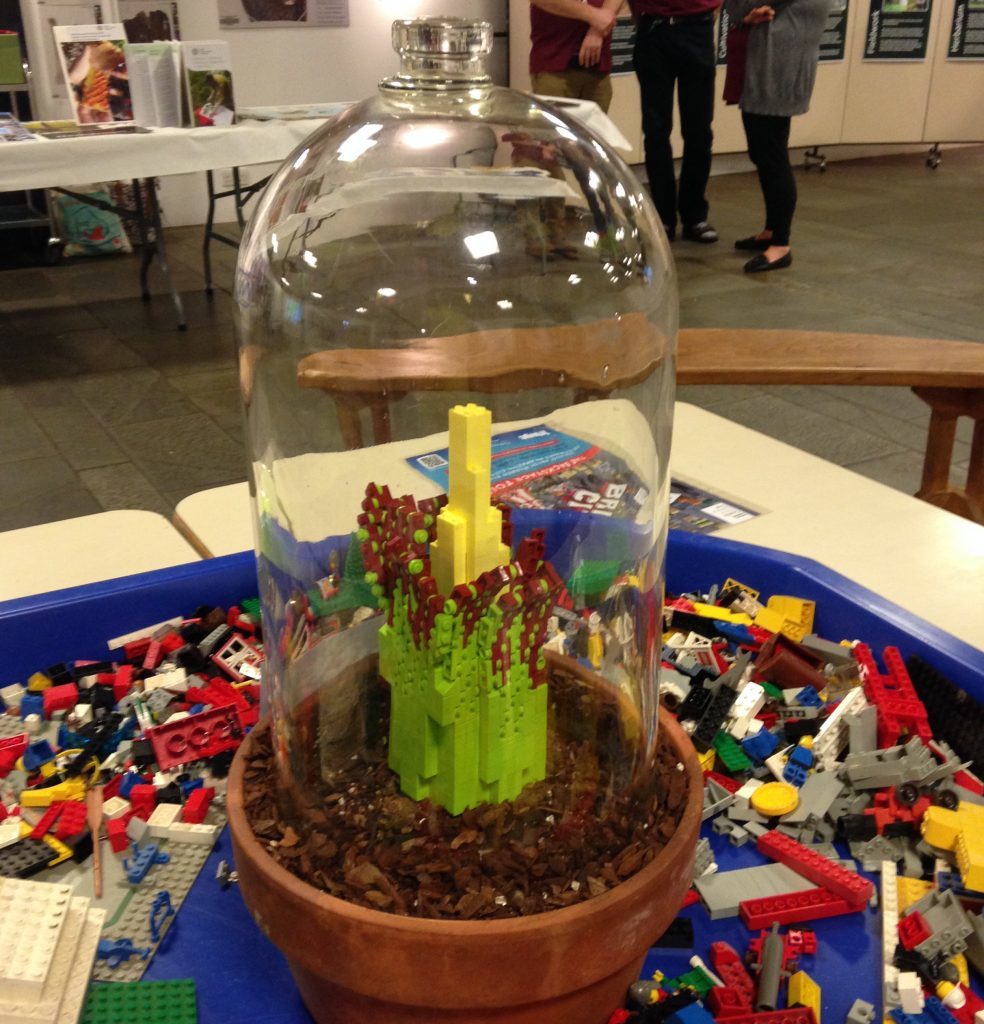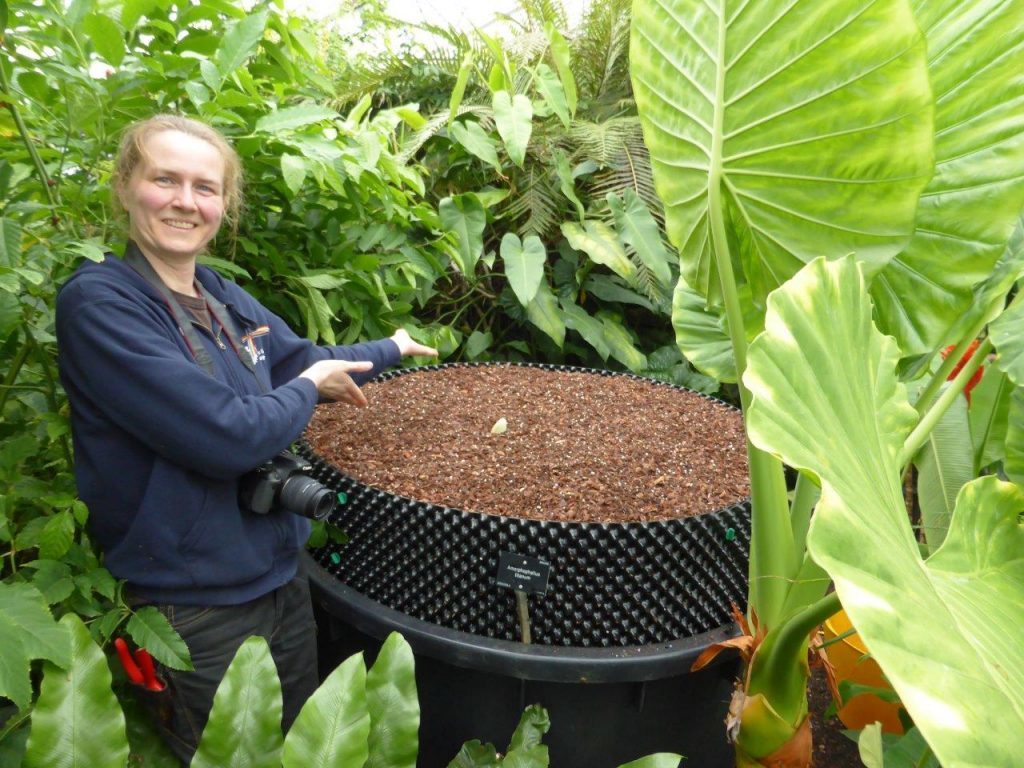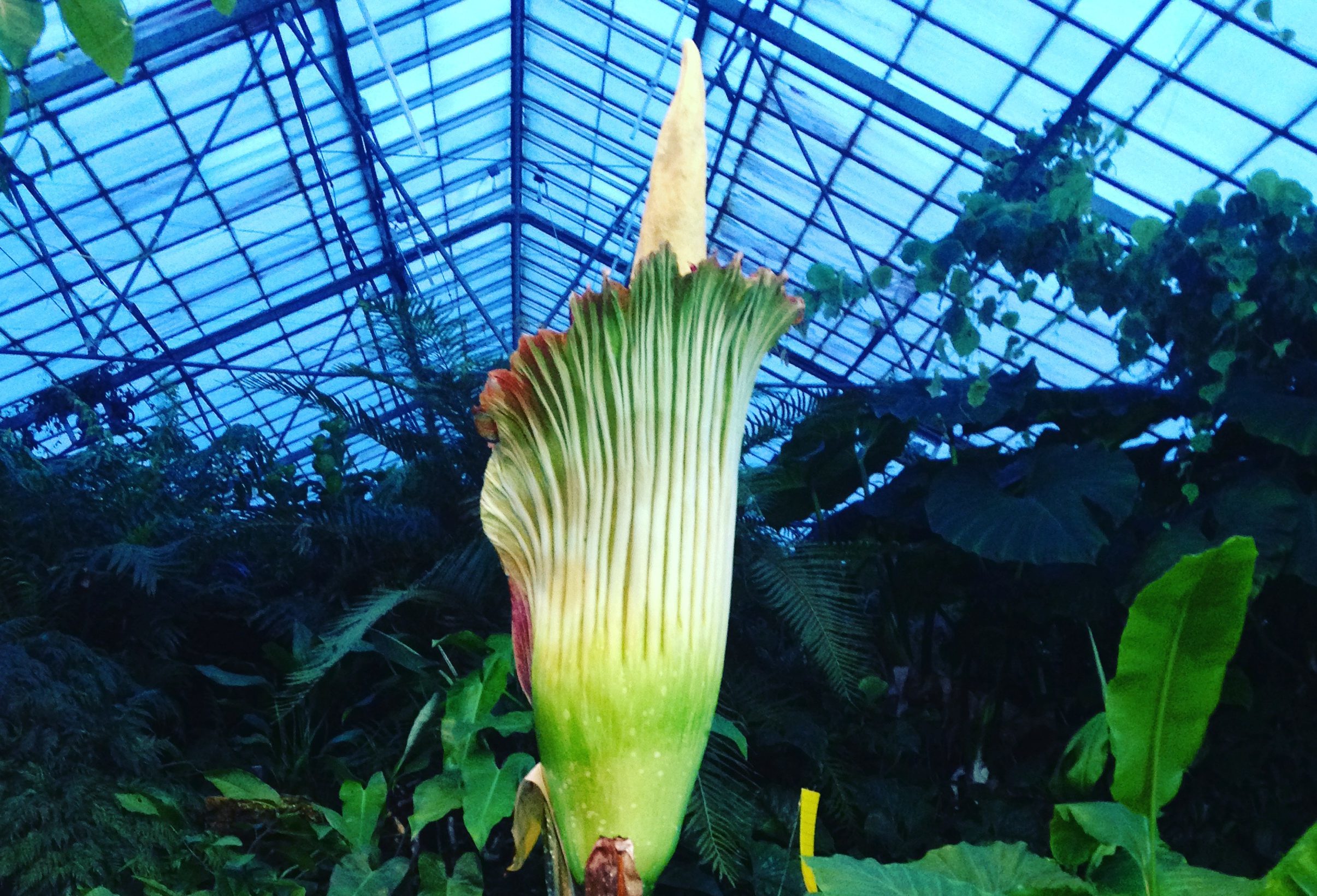
AROUND 19,000 visitors flocked to the Glasshouses of the Royal Botanic Garden Edinburgh (RBGE) back in June 2015 to be amazed by a new spectacle…
The Amorphophallus titanum (titan arum) – commonly known as the ‘corpse flower’ – flowering in Scotland for the very first time.
Just two years on, and the plant, christened ‘New Reekie’ by staff at the RBGE, has bloomed once more.
On Tuesday August 1, between 6pm and 9.30pm, hundreds of people queued to see the 2.02m tall plant flower – and to take in the putrid smell it emits. As the name suggests, the odour is rather unpleasant.

When asked, what it smelt like, visitors gave a wide variety of answers:
- Rotten cabbage
- Smelly socks
- A latrine
- A gym locker
- A used nappy
The incredible stench is designed to attract carrion insects by making them believe the plant is rotting meat.
As the night wore on, the fragrance only became more powerful, before staff decided to cut into the Sumatran plant to begin pollination.
If the Amorphophallus titanum successfully fruits, the plant will most likely die after completing its natural life cycle. It is predicted the flower will last one or two days.
RBGE staff are keen to investigate why several Amorphophallus titanum plants are flowering in different parts of the world at the same time – are there particular environmental triggers? Are the plants that flower at the same time very closely related genetically?
RBGE was gifted the corm in 2003 by Hortus Botanicus in Leiden, Netherlands.
In 2010, RBGE’s Amorphophallus titanum was found to have the heaviest corm ever recorded (153.9kgs), when elephant scales were borrowed from Edinburgh Zoo. The dimensions of the corm have more than doubled since 2010, but it is too big to pull from the pot to weigh it.
More work is needed to establish the conservation status of Amorphophallus titanum in the wild. It is currently only known from the Bukit Barisan range of mountains in West Sumatra and is classified as Vulnerable (V) on the 1997 IUCN Red List of Threatened Plants.
The first collection of an Amorphophallus titanum was by Italian botanist Odoardo Beccari in 1878. It has been a botanical curiosity ever since.
Dr. Peter Wilkie is a Tropical Forest Botanist at the Royal Botanic Garden Edinburgh said: “The last time the Amorphophallus titanum flowered we studied its morphology and structure, this time we want to better understand its biology.
We want to investigate how it produces its famous smell, what pollinators are attracted to the smell and what animals disperse its seed. We are also keen to investigate why several plants are flowering in different parts of the world at the same time – are there particular environmental triggers? Are the plants that flower at the same time very closely related genetically? For such an iconic plant there is so much we don’t yet know.
“It is also very exciting that this year we have decided to pollinate. This will allow us to monitor and record the development of the seeds over the coming months. Unfortunately, it is also likely to shorten the period of time that the flowering structure will be erect. However, we need to balance the demands of the viewing public with the need to undertake important research and collect crucial data that can be shared with the scientific and conservation community.”
‘Incredible rapid growth’
Sadie Barber is a Senior Horticulturist, the Royal Botanic Garden Edinburgh, said: “The Amorphophallus titanum is one of the most remarkable plants in our collection, and we are one of the few UK Gardens to have the conditions required to grow this species from the tropics of Sumatra. We are collecting as much information as we can from our plant, to better understand it both scientifically and horticulturally; for example, we are taking measurements every day to record its incredible rapid growth.”
Dr Mark Hughes is a Tropical Botanist, the Royal Botanic Garden Edinburgh, said: “We have over 400 different plant species from Indonesia in our living collection, and have led five expeditions to the country in the last two years. However , the Amorphophallus titanum is the one that gets most attention, and rightly so. It’s like having a botanical panda baby, except it will be bigger, smellier and die back after three days.”

Enjoy the convenience of having The Sunday Post delivered as a digital ePaper straight to your smartphone, tablet or computer.
Subscribe for only £5.49 a month and enjoy all the benefits of the printed paper as a digital replica.
Subscribe